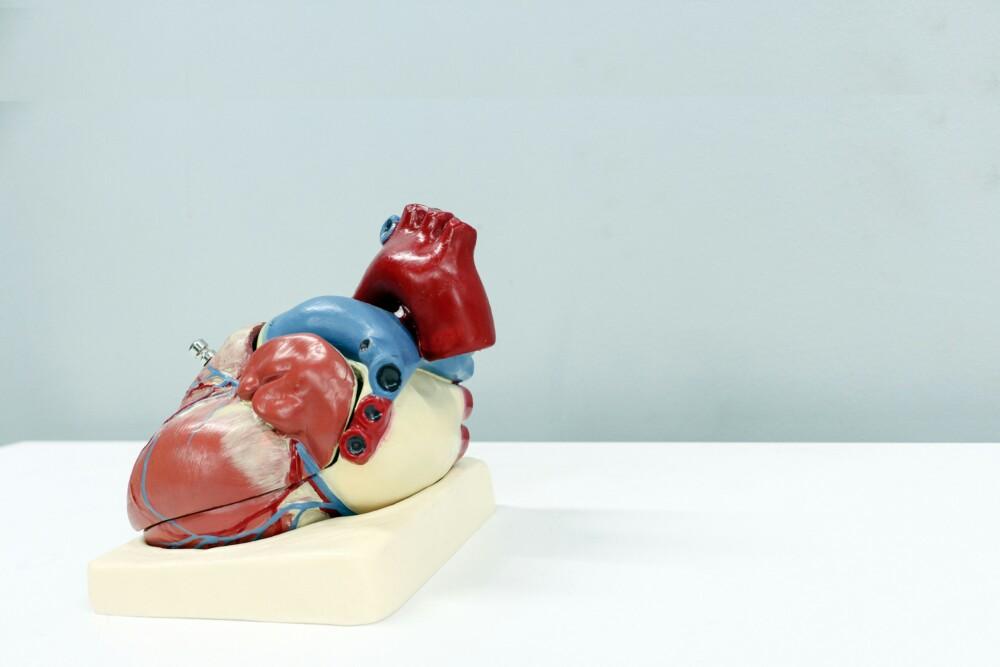What Defines a Holistic Strategy for Cardiovascular Wellness in New York?
Integrative naturopathic medicine is at the epicenter of heart health. It contrasts with conventional medicine by going after the root cause of issues such as arteriosclerosis, endothelial dysfunction, and oxidative stress.
Personalized nutrition, herbal medicine, and other strategies that integrate lifestyle modifications aim to strengthen the cardiovascular system. Naturopathy restores circulatory balance and prevents diseases because it treats the body as a whole.
Such treatments are helpful in urban environments like New York, where stress and pollution accelerate vascular aging and oxidative stress. The New York urban lifestyle is a chaotic mix of limited physical activity and agitated lifestyles, which add to poor cardiovascular health.
NCCIH recognizes holistic approaches and naturopathy as integrative tools to promote heart health. Something as simple as Tai Chi stimulates good cardiovascular health, especially when it’s part of a comprehensive plan. Find out more about how a holistic strategy supports the heart and reduces or prevents cardiovascular issues altogether.
How Does New York’s Urban Environment Impact Heart Function?
New York’s urban environment impacts heart function through factors such as air pollution, chronic stress, fast-paced living, and lack of green spaces. This increases blood pressure, which leads to hypertension and coronary artery disease.
Data from the Environment & Health portal suggests that while air quality is improving in NYC, the PM2.5 levels are still around 9 µg/m3. These levels are significantly higher in subway areas, where they can reach up to 293.6 ± 65.7 µg/m3, according to studies at Tulane University. These levels can negatively affect nitric oxide production, which plays an important role in blood vessel dilation.
Chronic stress hormones spike during commutes because of the crowded trains and long durations. This worsens blood pressure fluctuations and dysregulates autonomic responses, increasing blood pressure variability.
Reddit users in New York are frequently sharing how commuting by transit feels frustrating. Many have mentioned higher stress levels while taking the subway compared to taking the bus.
Taking the car is depicted as just as harmful for the blood pressure (and posture), due to high traffic. Many have admitted to choosing bikes as a means of transportation, noting an improvement in both heart health and mood.
Can Pollution in NYC Accelerate Arterial Stiffening?
Pollutants reduce vessel elasticity through inflammation, oxidative stress, and endothelium dysfunction.
Studies at University Medical Center Mainz show that regular exposure to 3.6 µg/m3 PM2 increases arterial augmentation by 0.8%.
Studies at Curtin University also reveal that a 124.7 ppb growth in VOCs increases arterial stiffness by 1.7%.
Pollutants trigger arterial elasticity through the following paths:
- Endothelial Inflammation: Pollutants induce endothelial inflammation because they trigger oxidative stress in the endothelial cells, damaging them. With time, the damaged endothelium is no longer able to produce nitric oxide (NO) to properly relax the blood vessels.
- Oxidative Stress: PM2.5 exposure leads to reactive oxygen species, which cause oxidative stress. This damages proteins, lipids, and DNA within the endothelial cells, compromising their flexibility and function.
- Vasomotor response dysfunction: Pollution particles interfere with the signal pathways that control blood vessel contraction. This negatively influences pulse wave velocity, leading to abnormal vasomotor responses.
New York’s density, diesel emissions, traffic, and poor subway air quality constantly affect vascular health. Daily commutes, especially during rush hour, accelerate arterial stiffening little by little.
New Yorkers frequently describe the sensation as “heavy chest” and fatigue, especially after they spend long days in traffic.
Holistic heart protection from pollution includes antioxidant support, anti-inflammatory botanicals, exercise, and lifestyle changes.
Naturopaths monitor the arterial stiffness index to detect arterial stiffening ahead of time. This helps slow and even reverse the cardiovascular effect, especially with the right treatment.
What Role Does Commuting Play in NYC Cardiac Strain?
Commuting plays a role in NYC cardiac strain by reducing physical activity time and inducing stress.
Some commuters note symptoms like heart palpitations when they’re stuck in traffic, which is a sign that their heart is going through stress.
Below are the main ways that commuting affects the heart:
- Sedentary Behavior: Commuting prolongs inactivity periods as New Yorkers are sitting on buses, subways, or even in their cars. Residents on Reddit forums claim the commutes last anything between 24 and 90 minutes (one way), depending on the hour, means of transportation, number of transfers, and location.
- Cortisol Spikes: Crowds, delays, and packed transportation lead to cortisol spikes. This increases catecholamine levels (e.g., adrenaline), which is known to constrict vessels and increase blood pressure.
- Metabolic Syndrome: Sedentarism during commutes encourages weight gain, insulin resistance, and hypertension. This adds to the progression of metabolic syndrome, which contributes to coronary artery disease. Movement breaks mitigate the cumulative strain, aggravating myocardial dysfunction.
The American Heart Association recommends at least 150 minutes of moderate-intensity activities per week. This helps counter sedentary risks and supports the well-being of the heart.
What Underlying Factors Does Naturopathy Address for Heart Protection?
Naturopathy addresses several underlying factors for heart protection, including inflammation and nutrient gaps. These go for the core imbalance that drives the disease rather than the symptoms alone.
Naturopathic cardiovascular prevention investigates the following:
Naturopathy targets inflammatory cascades through anti-inflammatory herbs and diets. This includes cytokines, NF-κB, and reactive oxygen species (ROS). Oxidative stress exacerbates inflammation because of the pollution in New York, which makes it important to reduce said inflammation.
High or oxidized LDL, along with low levels of HDL, contribute to the risk of early arterial plaque formation (subclinical atherosclerosis). Naturopaths use nutrients and botanicals to lower LDL levels and improve lipoprotein functionality.
High homocysteine levels increase the risk of heart disease and are linked to thrombosis, endothelial dysfunction, and oxidative stress.
Studies by Sapha Shibeeb at RMIT University reveal that 40% of increased CVD mortality was mediated by homocysteine level correction treatments.
Naturopathic paths include methylation support to correct the deficiencies that compromise myocardial integrity.
Microbiome influences suggest that gut dysbiosis increases heart disease risk through inflammation and endotoxin exposure. The gut flora modulates lipid metabolism. A healthy gut produces SCFAs, which have an anti-inflammatory effect on the gut. This reinforces the gut lining, preventing leaky gut syndrome and reducing the risk of heart disease.
How Can Gut Imbalances Contribute to NYC Heart Risks?
Gut imbalances contribute to NYC heart risks by promoting systemic inflammation and increasing the levels of endotoxins.
Gut dysbiosis drives various heart-related conditions, such as atherosclerosis and other CVD:
- Leaky Gut Syndrome: Imbalances in the microbiota compromise the intestinal barrier. This leads to a condition called “leaky gut,” which lets lipopolysaccharide (LPS) endotoxins slip into the bloodstream. The endotoxins trigger plaque buildup (atheroma formation), contributing to hypertension and arterial stiffening.
- Urban Diets: NYC fast-food diets exacerbate the gut-cardio connection as they favor inflammatory bacteria growth. Ultra-processed foods and sugary snacks exacerbate the translocation of LPS and vascular inflammation. This contributes to cardiovascular diseases.
- Urban Stress: Stressors such as long commutes disrupt the microbiota levels through the production of cortisol. This decreases intestinal barrier integrity and leads to systemic inflammation, contributing to leaky gut and heart disease.
Certain probiotics are helpful to restore intestinal barrier integrity and indirectly protect heart health. Adhering to a naturopathic treatment that includes probiotics, prebiotics, and fermented foods mitigates the cardiovascular risk over time.
Which Botanical Supports Enhance Cardiac Resilience in Urban Settings?
Botanical herbs like hawthorn berry and garlic extract strengthen myocardial contraction in urban city environments.
The right extracts reduce platelet aggregation and supplement cellular energy. This improves cardiovascular resilience, especially with regular administration.
- Hawthorn Berry: Known for its ability to improve blood flow, which helps the heart function. Its role as a natural vasodilator is to relax the constricted blood vessels and reduce blood pressure.
- Garlic Extract: Helps lower cholesterol, arterial stiffness, and the phenomenon known as “blood stickiness.” Studies at the University of Adelaide show that garlic supplements reduce blood pressure, decreasing cardiovascular events by 16-40%. It acts similarly to anti-hypertensive drugs.
- Coenzyme Q10 (CoQ10): This supplement reduces oxidative stress in patients with coronary heart disease. It improves cardiac output after surgery or in the early stages of disease, strengthening myocardial contraction.
- Omega-3 Fatty Acids: This natural remedy promotes heart health by lowering inflammation, reducing blood pressure, and improving triglyceride levels. This applies mostly to the Eicosapentaenoic Acid (EPA) and docosahexaenoic acid (DHA) omega-3 types found in fish or fish oil.
Patients undergoing medication should keep in mind that certain natural supplements may interact with medications.
For example, garlic extract and omega-3 fatty acids may interact with anticoagulant medication. Similarly, CoQ10 requires careful administration in patients on blood medication.
Can Supplements Safely Integrate with Conventional Heart Meds?
Supplements safely integrate with conventional heart meds, provided there are no notable interactions between them. A good strategy based on timing and dosage allows patients to enjoy the benefits, although naturopathic monitoring is highly recommended.
Supplements augment pharmacological effects, increasing the risk of bleeding. Monitoring prevents adverse interactions, especially when you’re taking blood thinners for heart conditions.
Aside from the anticoagulant risk, incorrect combinations can lead to poor absorption of conventional heart medicine, metabolic interaction, and effect modification of the drug.
FDA advises on care when combining drugs with herbs and adjusting the dosage as needed when taking supplements.
However, there are some statin-herb synergies where the combination works, such as statin + CoQ10. Anticoagulants and garlic extract also work when prescribed correctly.
Skeptical Reddit users highlight that, in the NYC pollution, they require higher med-supplement dosages to get the required effect. There’s little support for this claim, which is why naturopaths advise on slow, gradual increments, if needed.
How Do Lifestyle Modifications in New York Foster Heart Vitality?

Lifestyle modifications in New York foster heart vitality by promoting regular movement, managing stress, and encouraging a healthy diet.
A holistic heart diet in New York includes Mediterranean diet variations:
- Vegetables
- Legumes
- Fish
- Fruits
- Whole grains
- Olive oil
- Nuts
HIIT adaptations also drive cardiovascular gain. Physical activities promote vasodilation and stimulate shear stress. New York dwellers may consider walking circuits or active commuting, such as taking the stairs, getting off the subway one stop early, or taking walks through the park.
These modifications promote endothelial repair and vascular recovery.
Yoga practices and deep breathing also buffer sympathetic overdrive triggered by urban stressors. Studies at the New York Medical College show that yoga improves systolic blood pressure by approximately 3.5%, with patients noting a 4.56 mm HG drop.
What NYC-Adapted Movements Build Cardiovascular Endurance?
NYC-adapted movements like stair climbing, walking, and yoga exercises stimulate cardiac output, reducing the chances of coronary heart disease.
Below are some city-friendly activities that New York dwellers can try:
- Stair climbing
- Urban walking circuits
- High-intensity interval training
- Yoga practices
- Pilates and Tai Chi
- Bike rides
These activities require less than 30 minutes per day to put the heart in motion. It’s advisable to incorporate as many of these movements as you can, as they offer different benefits.
For example, yoga facilitates autonomic balance, whereas HIIT exercises improve VO2 max.
These exercises fit time-constrained routines as they can be integrated with daily rituals. For instance, NYC dwellers can take the stairs instead of the elevator when going to work, or they may take their bikes instead of their cars or the subway.
What Outcomes Await New Yorkers Embracing Holistic Heart Care?
New Yorkers embracing holistic health care can expect to recover from stress-related heart conditions in as little as two weeks. Other programs may require months of treatment, especially in advanced stages.
Anonymized studies at the King Saud University show that moderate physical exercise decreases LDL levels from 147±27 to 131±2 in a total of eight weeks. This decreases cardiovascular strain, promoting a sense of well-being.
Patients can expect the following results after long-term treatment:
- Lipid profile shifts
- Blood pressure normalization
- Plaque regression after consistent care
- Improved quality of life scores (energy, fatigue, sleep)
Careful monitoring tracks vascular impairment, which starts within the first weeks of treatment. Holistic approaches sustain preventative gains only if patients adhere in the long term. For a better life and heart quality, some of these changes should remain constant throughout their entire life.
How Quickly Can Urban Residents See Heart Health Gains?
Urban residents may see heart health gains within the first three months of holistic treatment, with sustained adherence to that treatment. Gains manifest through consistent protocols that amplify long-term results.
Here’s what to expect:
- 3-Month Benchmark: Blood pressure declines, weight adjustments, slight lipid shifts, improved endothelial function
- 6-Month Benchmark: BP normalization, significant lipid improvement, stronger stress resilience
- 12-Month Benchmark: Plaque stabilization, CVD regression, further BP stabilization
Reddit users advise waiting for the 12-month mark to see consistent improvement. Many patients noted fewer palpitations and resilience, with changes that were visible to others as well.
Ready to Begin Holistic Cardiovascular Care in New York?
To begin holistic cardiovascular care in New York, contact an integrative cardiologist in the early stages of your heart condition.
Dr. Susan Cucchiara takes the following steps to initiate tailored assessments:
- Comprehensive medical history review
- Baseline tests
- Priorities and goal setting
- Protocols to address individual risks
- Ongoing support to ensure sustained vitality
Telehealth is also an option that busy New York dwellers can opt for. This simplifies the consultation process, as it takes the stress of commuting out of the question.







